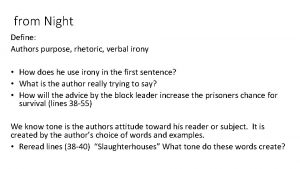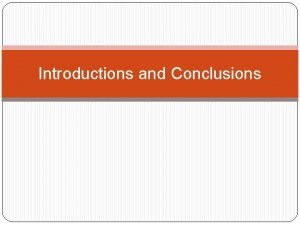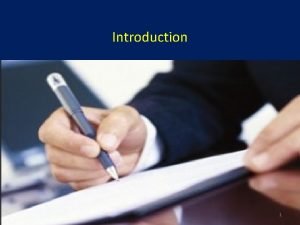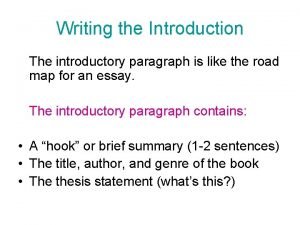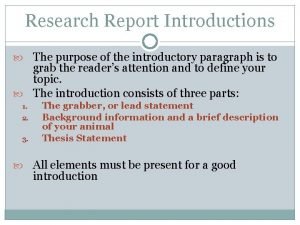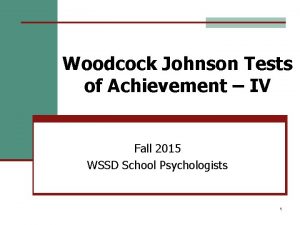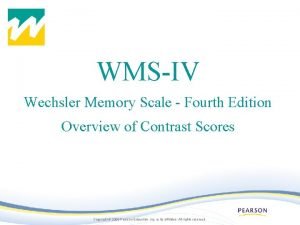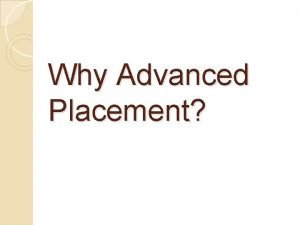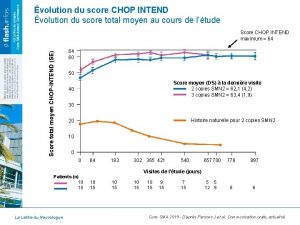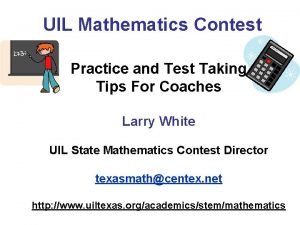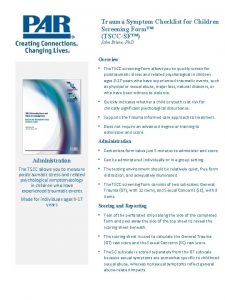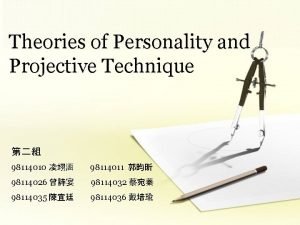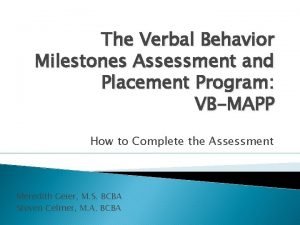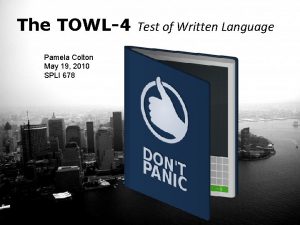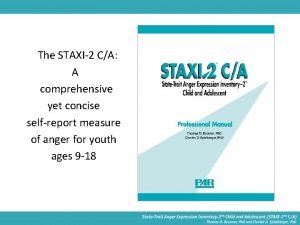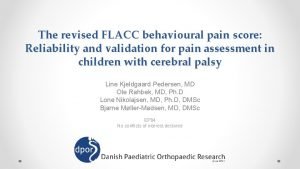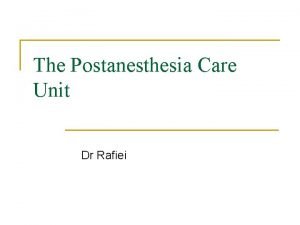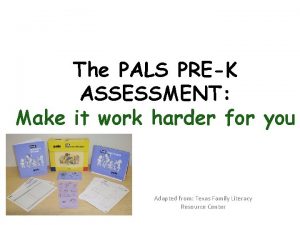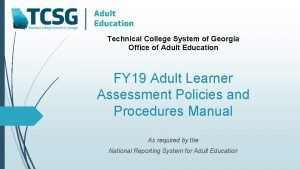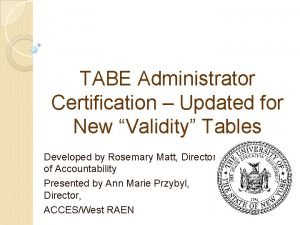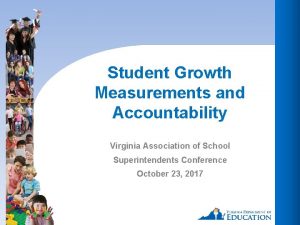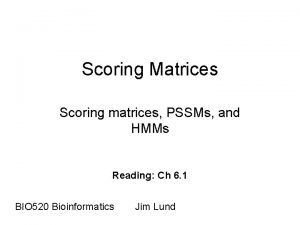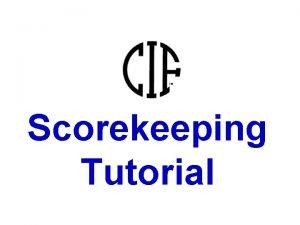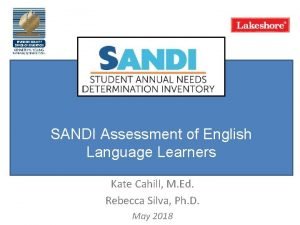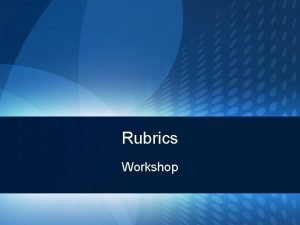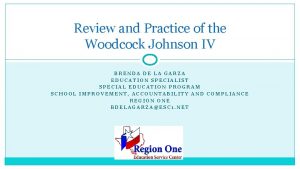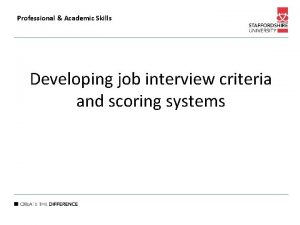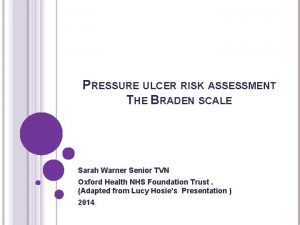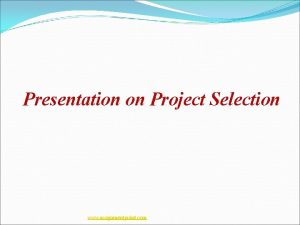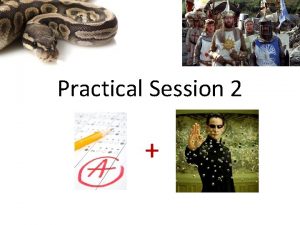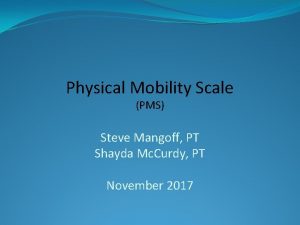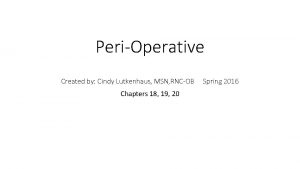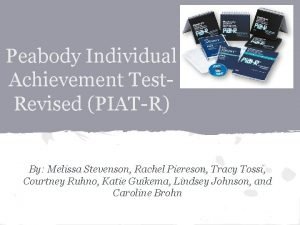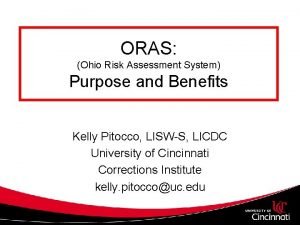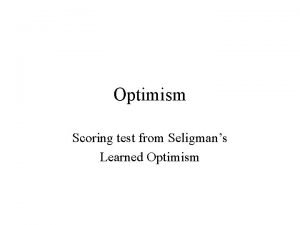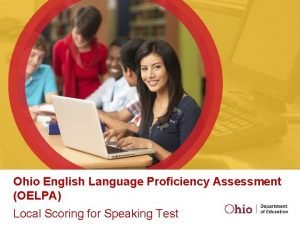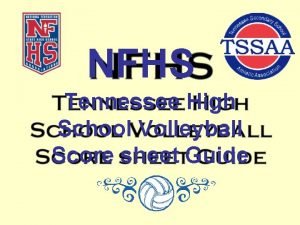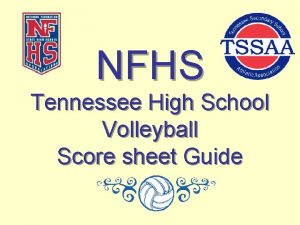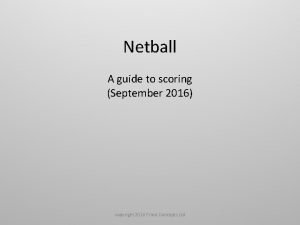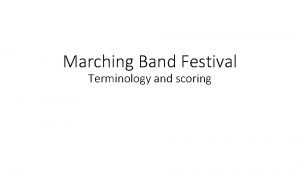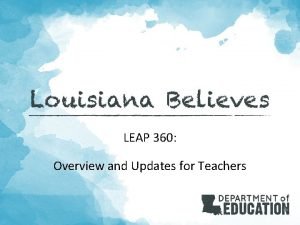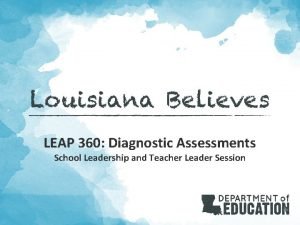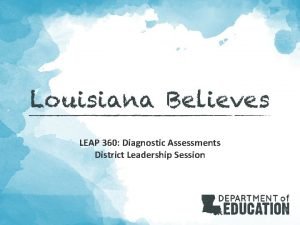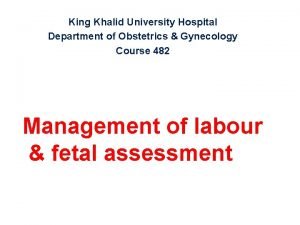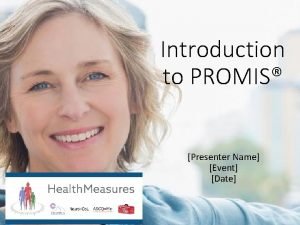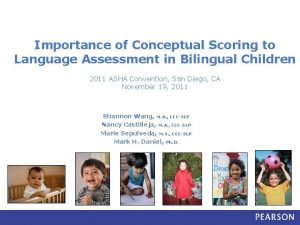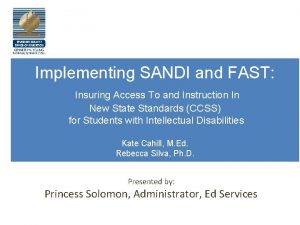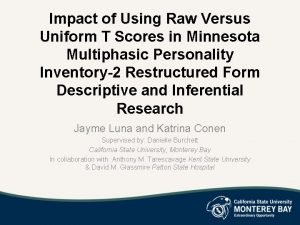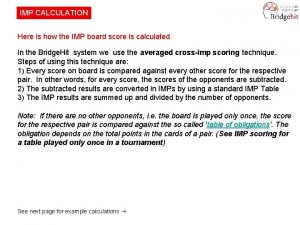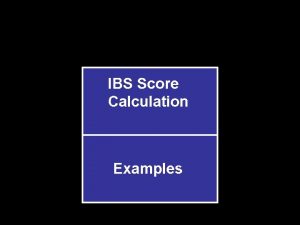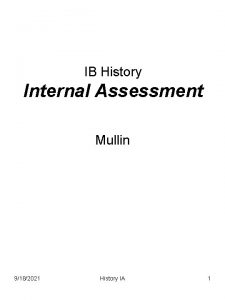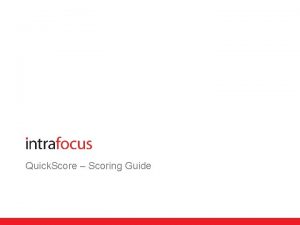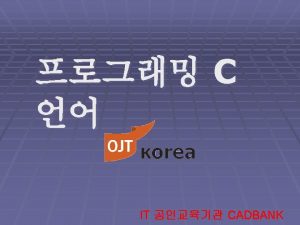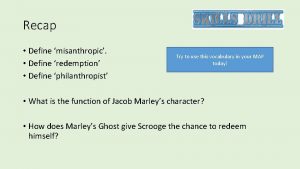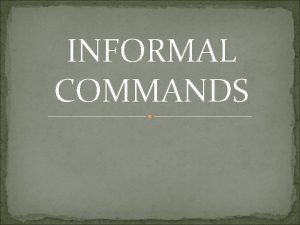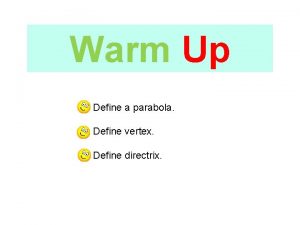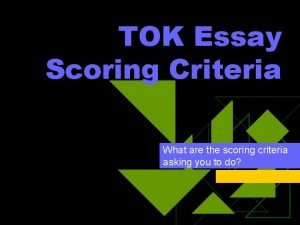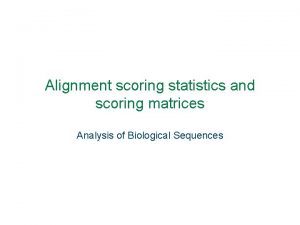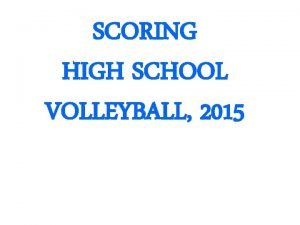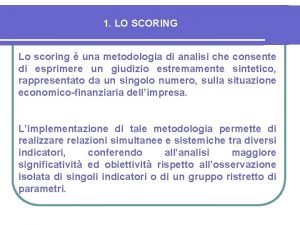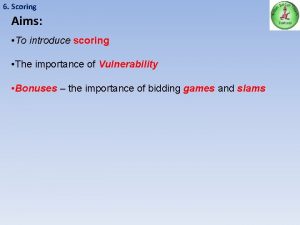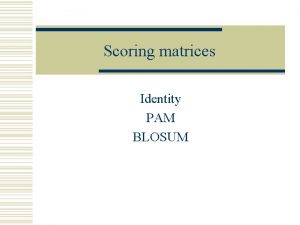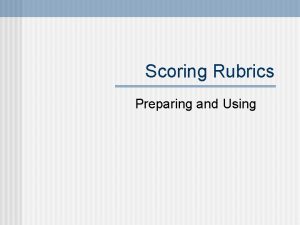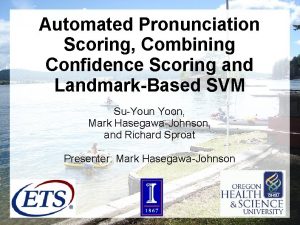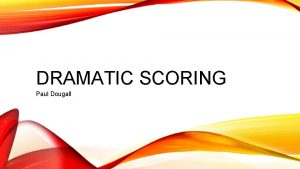SCORING INTRODUCTION PURPOSE INTRODUCTION PURPOSE Define what SCORING

































































- Slides: 65

SCORING

INTRODUCTION & PURPOSE

INTRODUCTION & PURPOSE Define what SCORING means for the purpose of these modules Explain how and why you should use well-designed tools, such as ANSWER KEYS, SCORING GUIDES and RUBRICS to score many assessments Explain what DISTINGUISHES ONE TOOL FROM ANOTHER

KEY CONCEPTS

KEY CONCEPTS

KEY CONCEPTS

KEY CONCEPTS

KEY CONCEPTS Source: Kansas State Department of Education, “Assessment Literacy Project”; Ohio Department of Education, “Assessment Literacy: Identifying and Developing Valid and Reliable Assessments” (2013); Relay Graduate School of Education, Designing and Evaluating Assessments (2014); and Rhode Island Department of Education, “Deepening Assessment Literacy. ”

KEY CONCEPTS

KEY CONCEPTS

KEY CONCEPTS

KEY CONCEPTS

KEY CONCEPTS

KEY CONCEPTS

KEY CONCEPTS

KEY CONCEPTS

KEY CONCEPTS answer keys scoring tools that provide the correct answer to an assessment item

KEY CONCEPTS Students select a response Students construct a response

KEY CONCEPTS


KEY CONCEPTS The item asks students to read the poem about the moon and nighttime and then answer the question about the poem’s first line, “The moon has a face like the clock in the hall. ” What is the meaning of the simile used in this line? a. The moon ticks like a clock. b. The moon is facing the hall. c. The moon is as round as a clock. d. The moon moves around the hall. Source: Haywood County Schools, “Smarter Balanced Test Items Samples: ELA Grade 3. ”

KEY CONCEPTS Option a: Students who select answer “a” are likely thinking about the clock ticking. Option b: Students who select answer “b” do not understand the context of the poem. Option c: Answer “c” is the correct answer because the moon is being compared to the shape of a clock. Option d: Students who select this answer do not understand the context of the poem.

KEY CONCEPTS Option a: Students who select answer “a” are likely thinking about the clock ticking. Option b: Students who select answer “b” do not understand the context of the poem. Option c: Answer “c” is the correct answer because the moon is being compared to the shape of a clock. Option d: Students who select this answer do not understand the context of the poem.


KEY CONCEPTS

KEY CONCEPTS scoring guides scoring tools that assign points to different levels of student performance

KEY CONCEPTS Students construct a response Students perform a task to demonstrate a particular skill


KEY CONCEPTS 2 points: Student has a thorough understanding of how to solve multistep word problems with whole numbers using multiplication and division. The student correctly answers $1, 116 and provides a thorough explanation of reasoning that makes sense with the answer given. 1 point: Student has a partial understanding of how to solve multistep word problems with whole numbers using multiplication and division. The student correctly answers $1, 116 but provides an explanation of reasoning that is incomplete or flawed; OR the student knows the operations/steps needed to solve the problem but makes an error in computation, carries this error out, and provides a thorough explanation of reasoning that makes sense with the answer given. 0 points: Student has little or no understanding of how to solve multistep word problems with whole numbers using multiplication and division. The student incorrectly solves the problem and provides no explanation of reasoning. Exemplar answer: $1, 116 25 25 25 25 30 boxes x 25 cards = 750 cards total Source: Oregon Department of Education, “Grade 4 Mathematics Sample ER Item Claim 2. ” 25 25 25 25

KEY CONCEPTS

KEY CONCEPTS rubrics scoring tools that articulate levels of performance in relation to standards or other expectations

KEY CONCEPTS Students perform a task to demonstrate a particular skill Students or teachers collect student work products

KEY CONCEPTS

KEY CONCEPTS Align with a standard Distinct from one another dimensions discrete traits that you plan to assess

KEY CONCEPTS Performance exceeds meets is standards approaching standards Performance is not meeting standards Content Organization Eye Contact Gestures Language Visual Aids Responses to Questions Source: Ohio Department of Education, “Assessment Literacy: Identifying and Developing Valid and Reliable Assessments” (2013).

KEY CONCEPTS Between three and six performance levels Performance exceeds standards Performance meets standards Performance is approaching not meeting standards Source: Ohio Department of Education, “Assessment Literacy: Identifying and Developing Valid and Reliable Assessments” (2013).

KEY CONCEPTS Between three and six performance levels Performance exceeds standards Performance meets standards Performance is approaching not meeting standards

KEY CONCEPTS Between three and six performance levels Performance exceeds standards Performance meets standards Performance is approaching not meeting standards

KEY CONCEPTS Between three and six performance levels Performance exceeds standards Performance meets standards Performance is approaching not meeting standards

KEY CONCEPTS Between three and six performance levels Performance exceeds standards Performance meets standards Performance is approaching not meeting standards

KEY CONCEPTS Performance exceeds meets is standards approaching standards Performance is not meeting standards Content Organization Eye Contact Gestures Language Visual Aids Responses to Questions Source: Ohio Department of Education, “Assessment Literacy: Identifying and Developing Valid and Reliable Assessments” (2013).

KEY CONCEPTS Discrete from the performance levels below and above it descriptors precise explanations of student performance

KEY CONCEPTS Performance exceeds meets is standards approaching standards Content The speech demonstrates thorough and accurate knowledge of the subject matter. Performance is not meeting standards The speech demonstrates accurate knowledge except in minor details. The speech demonstrates Organization thorough and accurate knowledge of the subject Eye Contact matter. The speech demonstrates accurate knowledge except in minor details. Gestures Language Visual Aids Responses to Questions Source: Ohio Department of Education, “Assessment Literacy: Identifying and Developing Valid and Reliable Assessments” (2013).

KEY CONCEPTS Performance exceeds meets is standards approaching standards Content The speech demonstrates thorough and accurate knowledge of the subject matter. Performance is not meeting standards The speech demonstrates accurate knowledge except in minor details. The speech demonstrates Organization thorough and accurate knowledge of the subject Eye Contact matter. The speech demonstrates accurate knowledge except in minor details. Gestures Language Visual Aids Responses to Questions Source: Ohio Department of Education, “Assessment Literacy: Identifying and Developing Valid and Reliable Assessments” (2013).

KEY CONCEPTS

KEY CONCEPTS

KEY CONCEPTS

KEY CONCEPTS

KEY CONCEPTS

KEY CONCEPTS Content Organization Eye Contact

KEY CONCEPTS Content Organization Eye Contact

KEY CONCEPTS Content Organization Eye Contact

KEY CONCEPTS

KEY CONCEPTS Performance exceeds meets is standards approaching standards Student Performance is not meeting standards

KEY CONCEPTS

CHECK FOR UNDERSTANDING

CHECK FOR UNDERSTANDING Define what SCORING means for the purpose of these modules Explain how and why you should use well-designed tools, such as ANSWER KEYS, SCORING GUIDES and RUBRICS to score many assessments Explain what DISTINGUISHES ONE TOOL FROM ANOTHER

CHECK FOR UNDERSTANDING

CHECK FOR UNDERSTANDING 1. Describe in a paragraph the differences between answer keys, scoring guides and rubrics.

CHECK FOR UNDERSTANDING 1. Describe in a paragraph the differences between answer keys, scoring guides and rubrics.

CHECK FOR UNDERSTANDING 1. Describe in a paragraph the differences between answer keys, scoring guides and rubrics. Answer keys provide the correct answer to an assessment item. Teachers use them when a student response is either correct or incorrect, typically for selected- and constructed-response items. Scoring guides assign points to different levels of student performance. Teachers use them when a student response can earn some of the total possible points, typically for constructed-response items and performancetasks. Rubrics show a clear progression toward mastery with descriptions of specific levels of student performance. Teachers use them to know when a student has mastered a skill or what he or she needs to do in order to make progress, typically with performance tasks and portfolio assessments.

CHECK FOR UNDERSTANDING 2. Describe in a paragraph why you should use an appropriate, welldesigned tool to make sure that your assessment provides accurate information about what students know and can do.

CHECK FOR UNDERSTANDING 2. Describe in a paragraph why you should use an appropriate, welldesigned tool to make sure that your assessment provides accurate information about what students know and can do.

CHECK FOR UNDERSTANDING 2. Describe in a paragraph why you should use an appropriate, well-designed tool to make sure that your assessment provides accurate information about what students know and can do. Answer keys, scoring guides and rubrics are three tools that provide a concrete set of criteria to score the work of students. They support consistency when a teacher or team of teachers score an assessment. For example, if I score an assessment without a scoring tool, I may unintentionally use one set of criteria to score the work of some students and different criteria for other students. In this case, the assessment will not only measure what students know and can do, but it will also measure when and in what order I scored the assessment. A group of teachers scoring an assessment without a scoring tool can face the same challenge. Without agreement on the criteria that they will use to score an assessment, a student’s score may depend on his or her mastery of the relevant standard and on who happened to score his or her work. Finally, if they do not use a scoring tool, teachers may miss opportunities to identify specific skills with which their students struggle.

CONCLUSION
 Script scoring symbols
Script scoring symbols Blockalteste definition
Blockalteste definition On purpose sentence
On purpose sentence Specific purpose statements
Specific purpose statements Purpose of introduction
Purpose of introduction Purpose introduction
Purpose introduction Conclusion paragraph format
Conclusion paragraph format Purpose of introduction
Purpose of introduction Woodcock johnson percentile ranks
Woodcock johnson percentile ranks Wechsler memory scale example
Wechsler memory scale example Eat sleep console scoring sheet
Eat sleep console scoring sheet Wida ams
Wida ams Ap biology exam
Ap biology exam Moteur scoring
Moteur scoring Uil mathematics scoring
Uil mathematics scoring Trauma symptom checklist for children™ screening form
Trauma symptom checklist for children™ screening form Concept of personality
Concept of personality Eesa subtest
Eesa subtest Test of written language 4
Test of written language 4 Staxi-2 c/a
Staxi-2 c/a Tabe test scoring chart
Tabe test scoring chart Flacc scoring
Flacc scoring Aldrete scoring
Aldrete scoring Pals-prek scoring guide
Pals-prek scoring guide Tabe test scoring chart
Tabe test scoring chart Tabe test scoring chart
Tabe test scoring chart Virginia growth assessment score chart
Virginia growth assessment score chart Hmm
Hmm Volleyball score sheet pdf
Volleyball score sheet pdf Sandi scoring rubric
Sandi scoring rubric My saebrs
My saebrs Purpose of running records
Purpose of running records Workshop rubric
Workshop rubric 1/4
1/4 Interview scoring criteria
Interview scoring criteria Braden scale scoring
Braden scale scoring Pvif table
Pvif table Blosum62 scoring matrix
Blosum62 scoring matrix Physical mobility scale interpretation
Physical mobility scale interpretation Modified aldrete score
Modified aldrete score Aldrete scoring
Aldrete scoring Performance rubrics criteria
Performance rubrics criteria Piat-r
Piat-r Non verbal pain scale
Non verbal pain scale Dibels nwf cls
Dibels nwf cls Oras scoring guide
Oras scoring guide Learned optimism test analysis
Learned optimism test analysis Oelpa
Oelpa Nfhs volleyball scoring
Nfhs volleyball scoring Ihsaa libero tracking sheet
Ihsaa libero tracking sheet Scoring in netball odd and even
Scoring in netball odd and even Finnegan score
Finnegan score Sports scoring software
Sports scoring software Band competition scoring
Band competition scoring Leap 360 interim test answer key
Leap 360 interim test answer key Ddi 360 assessment
Ddi 360 assessment Leap 360 diagnostic
Leap 360 diagnostic True labour pain definition
True labour pain definition Name
Name Weighted factor scoring model
Weighted factor scoring model Conceptual scoring
Conceptual scoring Sandi fast online login
Sandi fast online login Mmpi scoring
Mmpi scoring Cross imp scoring bridge
Cross imp scoring bridge How to calculate ibs score
How to calculate ibs score History ia title page
History ia title page

